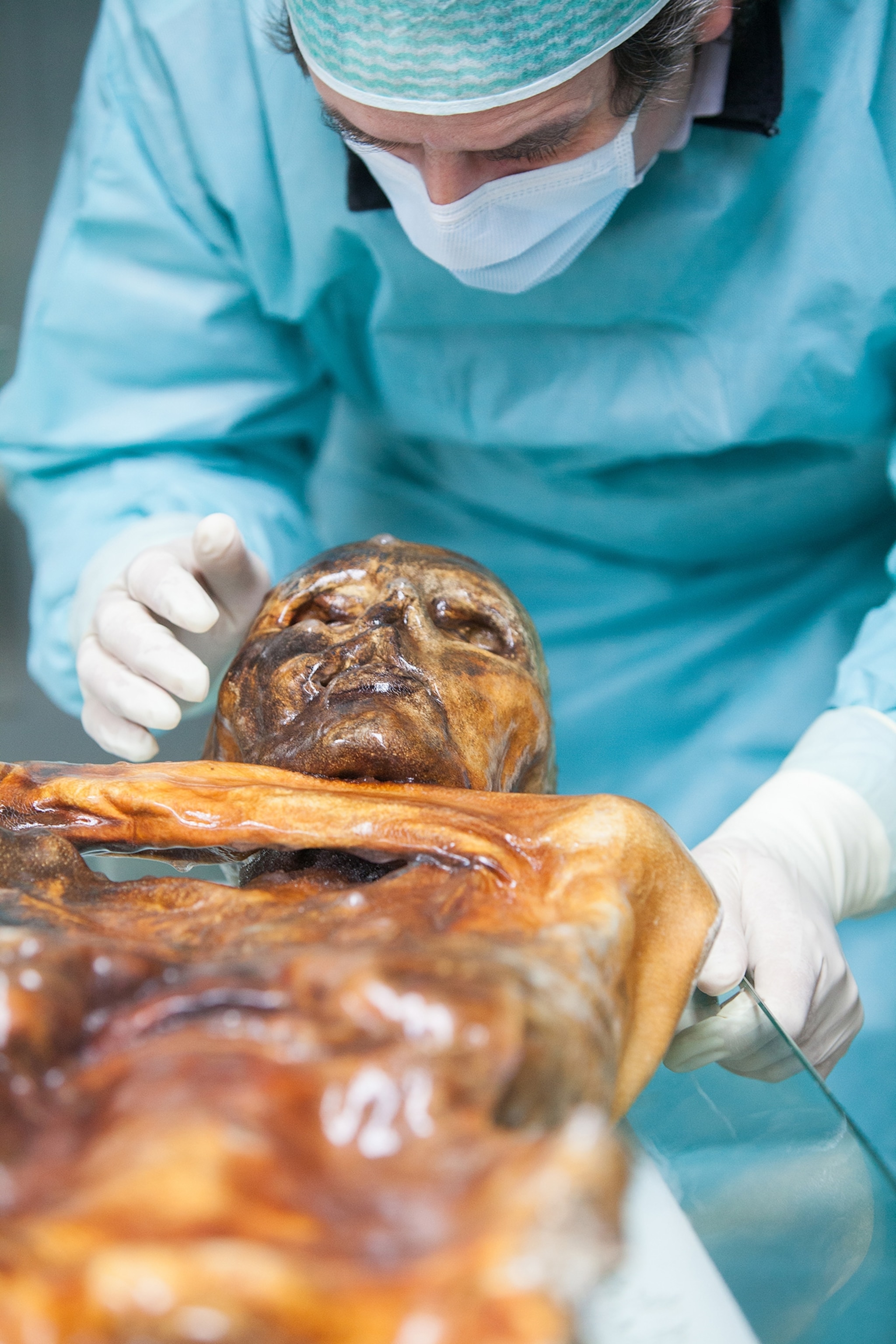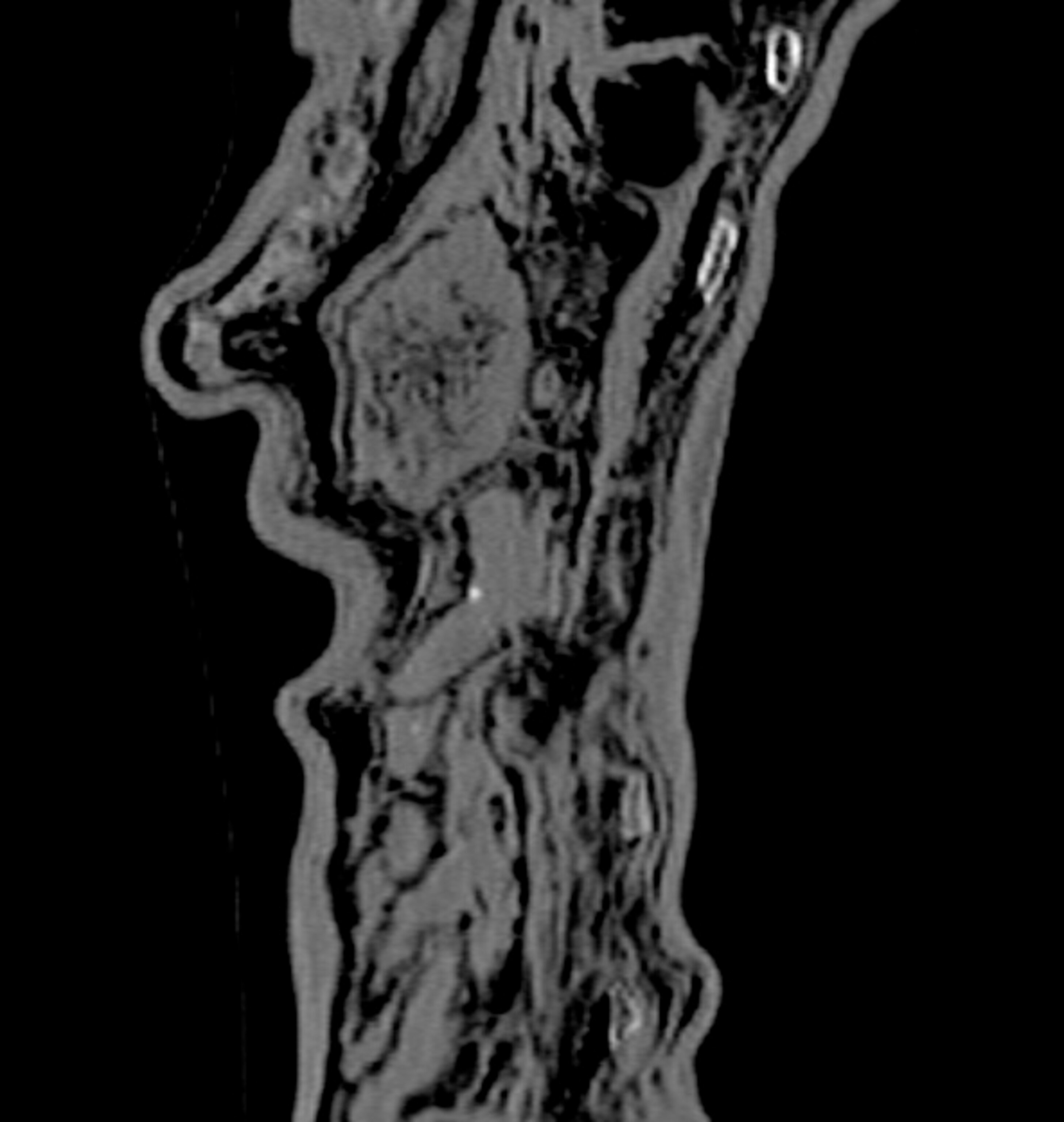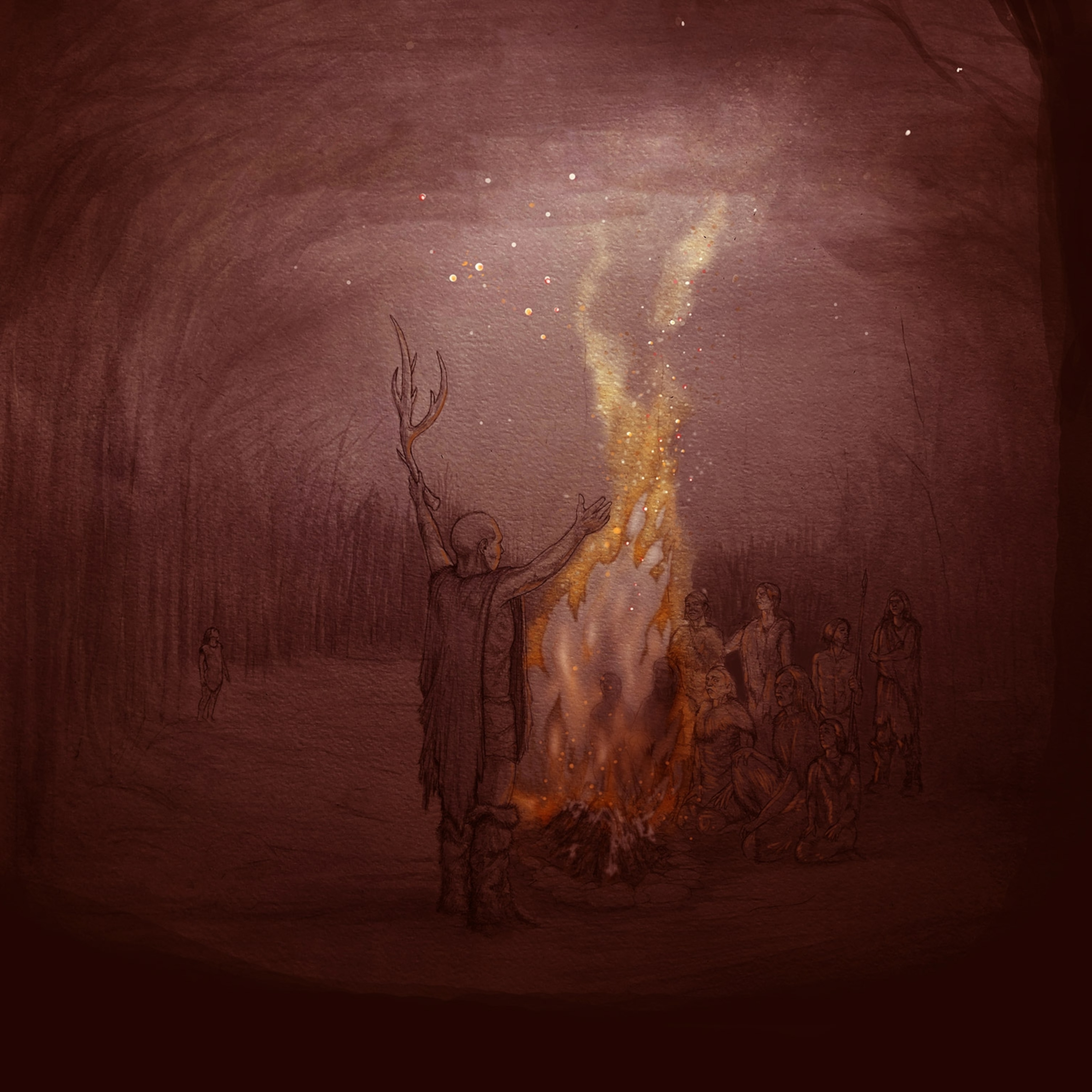
Iceman’s Gut Holds Clues to Humans’ Spread into Europe
The frozen mummy may have died with a wicked stomach ache from H. pylori bacteria, which also help date a migration wave from Africa.
A new DNA analysis of the stomach contents of Ötzi, the famous 5,300-year-old ice mummy known as the Iceman, has found that his gut contains a strain of infectious stomach bacteria not seen in modern humans.
The near-ubiquitous gut bacterium Helicobacter pylori causes some forms of stomach ulcers and stomach cancer. As reported Thursday in the journal Science, the ancient strain found in the Iceman—the oldest ever sequenced—suggests that he lived before the waves of human migration that came to define the gut microbes of modern Europeans.
The study adds to the incredible amount of information scientists have gleaned from the Iceman, one of science’s most carefully studied cadavers. Ever since hikers discovered the frozen remains near the Italian-Austrian border in 1991, researchers have pored over them, studying everything from the make of his clothing to the pollen grains embedded inside him. The Iceman’s body has revealed clues to how early Europeans looked, lived, and died.
“He’s the best-known, best-analyzed patient ever,” said the study’s lead author, Frank Maixner of the Institute for Mummies and the Iceman in Bolzano, Italy.
Hunt for a Last Meal
The unprecedented analyses tell the story of a brown-eyed, lactose-intolerant man who lived in a farming community most closely related to modern Sardinians. Perhaps most infamously, studies in the 2000s confirmed that he had been murdered, killed by an arrow to the shoulder that lacerated a major artery.
Researchers hungered to know the Iceman’s last meal, a trove of information about early European diet, but had been stymied for years by what appeared to be his empty stomach. It wasn’t until 2011 that researchers realized his previously identified stomach was, in fact, his colon—his actual stomach, which had been pushed unexpectedly far up into his ribcage during his time in the ice, was full.

The “earth-like” mash that researchers recovered from the stomach in a 2010 autopsy partially supported by National Geographic didn’t yield initial hints, though a more detailed chemical analysis is set to come out later this year. But those samples, in addition to previously collected extras, also gave researchers the chance to look for Helicobacter pylori.
H. pylori, which infected about half of all humans until recent hygienic advances, is one of humankind’s most persistent companions. In fact, genetic family trees of H. pylori backtracked from modern strains suggest that it accompanied modern humans out of Africa more than 100,000 years ago, hitchhiking around the world from stomach to stomach.
The bacterium also accrues mutations more quickly than human DNA, helping geneticists precisely track changes in how the bacterium—and the humans carrying it—diversified and moved across Earth over thousands of years.
Modern H. pylori strains suggest at least six ancestral branches to the bacterium’s family tree, each growing to dominate a different region of the globe. But modern European stomachs carry a genetic hodgepodge, a strain of H. pylori seemingly formed from a blend of two ancestral strains dubbed AE1 and AE2. How and when the two ancestral strains mixed remained a mystery, but one fact was clear: Humans helped them along.
“Since we are the only host of Helicobacter pylori, this mixing of two bacterial populations can only ever happen if humans actually come together,” said Yoshan Moodley of South Africa’s University of Venda, one of the study’s senior authors, in a Wednesday press conference. “And by ‘coming together,’ I mean, intimately. Children would have to play with each other.”
Previous studies suggested that ancient Europeans’ stomachs once carried AE1, which evolved in central Asia and later gave rise to south Asia’s most common modern strain. Human migration from northeast Africa would have then introduced AE2 to Europe.
Researchers had struggled, though, to determine precisely when the influx from northeast Africa took place—making the Iceman’s known time of death and intact stomach contents invaluable.
Human History in a Gut
Maixner and his colleagues carefully isolated DNA from a fingernail’s worth of the Iceman’s stomach contents, cross-referencing it with modern H. pylori strains. Once they verified the DNA’s ancient origin, they found that the Iceman’s H. pylori largely contained the Asian strain, with a small fraction of DNA cribbed from the African strain.
This means the major influx of northeast Africans must have taken place after the Iceman died. But the bit of a mix shows that—consistent with other archaeological and genetic evidence—the Europe of 5,000 years ago was a bustling, complex hub of human movement.

“There were continuous waves of migration—and continuous mixture of the bacteria,” said Albert Zink, the leader of the Institute for Mummies and the Iceman and one of the study’s senior authors. “It wasn’t just a single wave [of humans] or two.”
Though Daniel Falush of Swansea University, who wasn’t involved with the research, cautions that H. pylori can’t track human movements perfectly, scientists are thrilled by what they can now learn about history through our guts’ DNA. “I’m personally delighted,” said Falush, who led some of the original work characterizing European H. pylori.
Iceman’s Stomach Ache
In an intriguing turn, researchers also found that the Iceman, no stranger to suffering, may have had to grin and bear the H. pylori in his gut.
A close look at the Iceman H. pylori genome reveals that his strain was particularly nasty, containing genes associated with inflammation in some modern H. pylori variants. What’s more, the team found traces of proteins produced in response to inflammation, suggesting that he may have died with a wicked stomach ache.

The researchers are hesitant, however, to claim the Iceman had gastritis or stomach ulcers, or was abnormally sickened by the infection. That diagnosis would require intact stomach lining—too much to hope for, it turns out, after the Iceman spent five millennia in a block of ice.
“We knew that he had a very, let’s say, ‘rough’ lifestyle,” said Zink, but not one out of keeping with the times. “In the end, it was for sure a tough life in this time period, but with regard to this life circumstance, I think he was still in quite good shape.”
The study sheds further light on the hardscrabble existence of early Europeans—and pegs the timing of a migration that left its mark on millions of present-day stomachs. Not bad for a patient who spends most of his time in a subzero freezer.
“He can show us how [our ancestors] made our clothes, how they lived, what food they ate...and the kinds of diseases they had.” says Maixner. “It’s like a time machine.”
Follow Michael Greshko on Twitter.








